Pixar: Changing the Face of an Industry

Computer technology has taken filmmakers from the stone ages of film making to completely new heights. You don’t believe me? Well, take it from someone who knows then, from the man who started it all because he was aggravated with the encumbrances traditional filmmaking techniques imposed on him.
“To me it was like trying to tell a story by chipping it out of stone with a hammer and a chisel. Then someone hands you a word processor. ‘Wow! This is great. This is so much easier. I can talk faster. I can think faster. I can move things around’”, George Lucas once remarked.
 As many of you certainly know, George Lucas is the godfather of digital filmmaking, the initiator, the visionary who knew, that computers could change the face of the industry with a sleight of hand. When Lucas was preparing “The Empire Strikes Back” in 1978, computers were slowly emerging and intuitively he knew that great things could be done using computers in filmmaking. He was convinced it could lead the filmmaking community out of the 19th century technologies it was still using. But first you needed to get the images into the computer. To battle this problem, Lucas set up a small computer division, headed by Ed Catmull, hoping they would be able to create a complete digital editing system. Starting with a digital printer to scan images into the computer, the division was eventually able to really create a full post-production editing system before any one else succeeded at the same task. This ‘digital printer’ was a high-resolution scanner that allowed you to scan individual film frames into a computer. It is the forefather of ‘Telecine’ machines that are used all over the industry today to create digital versions of films, including those for your DVDs.
As many of you certainly know, George Lucas is the godfather of digital filmmaking, the initiator, the visionary who knew, that computers could change the face of the industry with a sleight of hand. When Lucas was preparing “The Empire Strikes Back” in 1978, computers were slowly emerging and intuitively he knew that great things could be done using computers in filmmaking. He was convinced it could lead the filmmaking community out of the 19th century technologies it was still using. But first you needed to get the images into the computer. To battle this problem, Lucas set up a small computer division, headed by Ed Catmull, hoping they would be able to create a complete digital editing system. Starting with a digital printer to scan images into the computer, the division was eventually able to really create a full post-production editing system before any one else succeeded at the same task. This ‘digital printer’ was a high-resolution scanner that allowed you to scan individual film frames into a computer. It is the forefather of ‘Telecine’ machines that are used all over the industry today to create digital versions of films, including those for your DVDs.
At the same time a fierce rivalry burst out between ILM, Lucas’ traditional special effects department, and the computer division. It would take a long time until both would start wetting their feet in each others’ territories and start using their technologies jointly in the 1982 film “Star Trek: The Wrath Of Khan”. Building digital printers, computers, editing systems and doing wire removal for traditional special effects shots wasn’t exactly what Ed Catmull, John Lasseter, Bill Reeves and their team had in mind for their future however. In 1986 they purchased their own computer division from Lucasfilm, and reorganized as an independent company. Pixar Animation Studios was born!
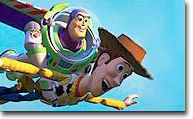 Immediately the company set about to advance the 3D technologies they had been working on before, and created breathtaking commercials and award winning short films. These successes always allowed them to keep developing new technologies and to keep pushing the envelope until in 1991 the company inked a partnership with Disney. Armed with their computers and their proprietary ‘RenderMan’ software, Pixar started work on “Toy Story”, the film that would become the first fully computer generated feature length movie. “Toy Story” generated an estimated $350 million worldwide and garnered numerous awards, most notable the Oscar for Special Achievement in 1996. But even before “Toy Story” hit theaters nationwide, the creative force at Pixar was already working on another project, called “A Bug’s Life”. Ambitious as they are, Pixar wanted to keep pushing the technology beyond what they did it in “Toy Story” and prepared for the production accordingly. To ensure feasibility of their plans, Pixar had to install twelve times the processing power they had for “Toy Story” and the company’s headcount shot from 175 to 400 employees in 1997.
Immediately the company set about to advance the 3D technologies they had been working on before, and created breathtaking commercials and award winning short films. These successes always allowed them to keep developing new technologies and to keep pushing the envelope until in 1991 the company inked a partnership with Disney. Armed with their computers and their proprietary ‘RenderMan’ software, Pixar started work on “Toy Story”, the film that would become the first fully computer generated feature length movie. “Toy Story” generated an estimated $350 million worldwide and garnered numerous awards, most notable the Oscar for Special Achievement in 1996. But even before “Toy Story” hit theaters nationwide, the creative force at Pixar was already working on another project, called “A Bug’s Life”. Ambitious as they are, Pixar wanted to keep pushing the technology beyond what they did it in “Toy Story” and prepared for the production accordingly. To ensure feasibility of their plans, Pixar had to install twelve times the processing power they had for “Toy Story” and the company’s headcount shot from 175 to 400 employees in 1997.
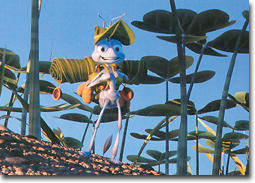 Now Pixar and Disney are releasing “A Bug’s Life” to DVD. The release is Disney’s first animated feature film release on DVD. “We’re excited to be their first animated feature film on DVD”, Pixar’s Bill Kinder, Editorial Supervisor at Pixar Animation Studios, enthuses.
Now Pixar and Disney are releasing “A Bug’s Life” to DVD. The release is Disney’s first animated feature film release on DVD. “We’re excited to be their first animated feature film on DVD”, Pixar’s Bill Kinder, Editorial Supervisor at Pixar Animation Studios, enthuses.
Since the entire film was computer generated, Pixar embraced the opportunity to completely rework the film for release on home video. The geometry of numerous scenes has been completely rearranged to create a new full frame version of the film, making sure the pictures do not lose any important information.
“It took us a long time to do that”, Craig Good, Pixar’s Senior Layout Artist and man of the first hour, ponders. “I wish I had the actual schedule, but it took a crew of people several months.”
The newly created transfer is not a simply pan & scan version which crops the image on the sides. Being shot in an 2.35:1 aspect ratio, the folks at Pixar felt it wouldn’t do the film justice to simply crop vital information. “We used a number of different approaches,” Craig Good explains. 45% of the scenes were panned and scanned but the other 55% were completely re-computed. Some 950+ shots were completely re-rendered with an opened matte, using a different lens to change the proportions. Luckily only a handful of the shots needed to be fixed really seriously.”
Opening the matte posed a completely different problem however when certain elements that had not been visible in the frame before showed up now and turned out to be not animated. “Oh yeah we’ve seen that problem”, Craig and Bill laugh. “Feet or hands were below the frame line and of course not animated. All of a sudden we open the matte and you see it. We had to go back and fix some of these things. We also had to tweak the lighting in a few scenes. Since many of the elements weren’t visible before, they weren’t lighted properly either.”
Interestingly the overall feel of the film seems to remain consistent despite the changes. “Since the re-framing wasn’t simply a change of the aspect ratio, we re-arranged certain things for the smaller screen. Widescreen movies have been designed for movie theaters and one of the weaknesses when bringing these widescreen transfers to video is the loss in impact and detail because of the much smaller screen. “A Bug’s Life” gave us the chance to get that back. Some of the re-framed scenes actually look better than their widescreen counterparts, it’s just the way the beast works.”
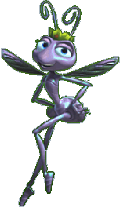 Asked about the lack of a 16×9 enhancement on the DVD, Bill continues. “The interesting thing about anamorphic transfers is the increase in resolution if you watch it on a 16×9 screen. However, since we have a re-framed version that uses all the lines of the TV set, this one in fact becomes the highest resolution you can see these images at. It is definitely not a compromised version! It stands on its own. It’s right there an amazing quality achievement and completely transcends the 16×9 discussion.”
Asked about the lack of a 16×9 enhancement on the DVD, Bill continues. “The interesting thing about anamorphic transfers is the increase in resolution if you watch it on a 16×9 screen. However, since we have a re-framed version that uses all the lines of the TV set, this one in fact becomes the highest resolution you can see these images at. It is definitely not a compromised version! It stands on its own. It’s right there an amazing quality achievement and completely transcends the 16×9 discussion.”
Obviously concerns at Pixar also are the inconsistency in the down-conversion of anamorphic transfers in different players. It takes the anamorphic transfer and filters out lines to accomodate a standard letterboxed presentation. Some players don’t do this very well. “For us it is more preferrable to maintain control over the quality and not rely on the lowest common denominator. Until everyone has 16×9 widescreen TVs, this is a practical reality and we have to live with it. Once again, the new, re-framed version bypasses all that discussion however.”
“A Bug’s Life” will be released on a dual layer disc that contains the widescreen version of the film as well as the new fullscreen presentation. Selectable through the main menu, both versions are accessible without having to flip the disc over. Both transfers will be the first ever digital-to-digital transfers to hit home video. This means the movie never went to film but instead an immediate digital copy was used to create the DVD masters. “There’s something otherworldly about that,” Craig raves. “There’s no grain! Usually when you watch a movie, within the first 10 seconds or so there’s always a white spot, dust or any other film artifact somewhere. Now, when you watch the direct-digital transfer without all that, it’s like you cleaned your glasses, like having the fog blown out! You will love it.”
Although DVD offers the technology that would allow filmmakers to make their work more interactive, Bill and Craig are hesitant about that. “I think we’re mostly focussed on making films that are linear and require the storytelling skills that Pixar is so known for. Interactivity is a totally different beast. We had an interactive division, but these people are now contributing to our movies.” Craig sums it up, and Bill adds, “If we ever had the opportunity to, maybe we would use the multiple angle capabilities to allow viewers to switch between the film and a storyboard version, but that’s it. The films are composed to have an editorial flow and the animation is done to a particular point of view.”
“A Bug’s Life” was created using a 2.35:1 widescreen aspect ratio, which resulted in individual frames that were rendered out at 2048×862 pixels. This is a surprisingly low resolution, considering the image will be projected on an over 30 feet large screen. “Two things help.” Craig explains. “Once we did some measurements on the resolution of 35 mm film prints and more interestingly, the actual resolution you get when you project this 35 mm print to a screen. If you high end use lab equipment you can get about 2000 lines out of this print, but even in a good movie theater only 850-900 lines are visible. On ‘Young Sherlock Holmes’ we computed the glass-window knight at 1024×600 pixels or so, and they even had to diffuse it in Optical to make it soft and match the film.”
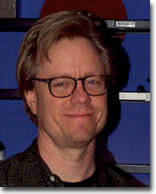 “You have to know how RenderMan works to understand why we get away with such a low resolution. It anti-aliases the image using multiple samples per pixel. Other renderers render in hi-resolution and then apply anti-aliasing as a post procedure. When we have a 2048 pixel frame, it compares to what other people have in 8192 pixels, but it doesn’t take nearly as much processing time and space.”
“You have to know how RenderMan works to understand why we get away with such a low resolution. It anti-aliases the image using multiple samples per pixel. Other renderers render in hi-resolution and then apply anti-aliasing as a post procedure. When we have a 2048 pixel frame, it compares to what other people have in 8192 pixels, but it doesn’t take nearly as much processing time and space.”
“We did film test at different resolutions, including these higher than 2048 pixel frames and everyone said, why should we bother? You couldn’t see the difference. Even a 1024 dpl projector looks as good as it does. If you go to a normal theaters you do really well if you see 1000 lines, which is kind of disappointing, actually.”
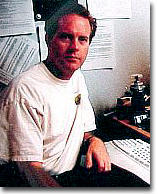 Instead of having two fully detailed hero-models only as in “Toy Story”, “A Bug’s Life” asked for many more of these complex models. “Almost all of our characters in this film were like Buzz and Woody”, technical director Eben Ostby observes. “On this film, except from a few minor characters, all the models had the same rich set of facial controls”. Using Pixar’s proprietary Marionette software to animate these complex models would prove highly efficient for the animators, but put quite a bit of stress on the hardware and brought the team’s progress to a crawl at one point. “We were pushing the envelope and hit an unexpected hurdle with our software”, Pixar’s Graham Walters admits. Fortunately it turned out to be the only crisis on the production and with additional brainpower, a rescue team consisting mainly of personal from the RenderMan department, were able to optimize the code to the point that the Marionette system became up to eighty times faster than it was before.
Instead of having two fully detailed hero-models only as in “Toy Story”, “A Bug’s Life” asked for many more of these complex models. “Almost all of our characters in this film were like Buzz and Woody”, technical director Eben Ostby observes. “On this film, except from a few minor characters, all the models had the same rich set of facial controls”. Using Pixar’s proprietary Marionette software to animate these complex models would prove highly efficient for the animators, but put quite a bit of stress on the hardware and brought the team’s progress to a crawl at one point. “We were pushing the envelope and hit an unexpected hurdle with our software”, Pixar’s Graham Walters admits. Fortunately it turned out to be the only crisis on the production and with additional brainpower, a rescue team consisting mainly of personal from the RenderMan department, were able to optimize the code to the point that the Marionette system became up to eighty times faster than it was before.
Even with the help of the most sophisticated software however, computer animation is a field that asks for a number of unique skills and different methodologies, you would think. “Actually the basic principles are the same.” Craig Good remarks. “We have animators who never worked with computers before and did cel type, stop motion or even clay animation. The basic principles like squashing, stretching, etc. still apply, and we try make our computer systems usable and accessible for them.”
Instead of them drawing frames, the computer gives them a marionette they can pose and work with. “At the artistic level, it doesn’t really make a lot of difference, other than that everything is done in the computer. We don’t use rigs or puppets, it’s all done by manipulating data with software.” Good continues excitedly. “We also don’t use motion capturing. While it is useful for capturing human beings, you can’t get the exaggerated movements we need in our film out of them. Just think of it, how do you motion capture Mr. Potatohead?”
In doing their work this way, Pixar has some substantial advantages over traditional cel animation. “Repeatability is the key”, Craig Good sums it up. “It is a completely motion controlled world. In the re-framing project for those 55% we had re-compute, we would just go back and shoot with a different camera after all the acting is done. We would go in and recompose the images after the acting is finished, which gives us an incredible flexibility”.
“Another huge aspect is the ability to collaborate with different people as a team through networks”, Bill Kinder adds. “We have the ability to have many people working on the same thing at the same time. This is technically impossible in traditional animation. We share things a lot. We usually have two or three animators working on the characters in a given shot. You can easily have completely different acting styles within a shot by simply assigning different animators to the different characters and you combine talent on a critical shot.”
It is obvious, the artist is still key to create animated films like “A Bug’s Life”, despite the omnipresence of computers, which almost makes you fear that the films will lose the magical, personal touch of human animators.
“No matter what we do and how much we automate, we always put it in the hands of the animator. The technologies are there to give them more control. The computer is the world’s best in-between artist. It’s the same thing. If we give the animator control over dynamics, it’s just a way to letting that animator have more creative control. The computer isn’t doing the actual work. It’s just a very expensive pencil. The power is still in our hands, we now use the keyboard the way we used to work with pencils and brushes.”
Apart from the animation part, a lot of work also has to go into the production and set design, and in computer generated films, these take a new meanings all of a sudden. “The way we approach it is a mix between live action films and the animated world.” Craig Good comments. “Everything needs to be approached like a live action shoot. We have to make props and build sets. Even more so, because everything that appears in the frame needs to be built. But we also approach it as an animation film where everything’s highly stylized. We’re interested in a coherent world for our story, not reality. Making it interesting is the key and we do have an art director and production designer who work as if they were on a live action set.”
Bill Kinder notes, “It takes on a new proportion, though. Everything needs to be more detailed. We have people drawing lines on leaves, and believe me leaves are not trivial. The work we do is not necessarily more difficult, but we have a lot more design work to do than in other films.”
Since the computer also helps to manage large numbers of objects in a single frame, it almost seems as if crowd scenes are becoming a new trend for all computer graphic associated productions.
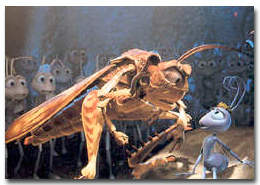 “We put in crowd shots were the story demanded it. They’re really hard to do and I feel our crowd team did a fantastic job.” Bill Kinder explains. “For better or worse, we decided to make a story in an ant colony, and you need crowd scenes to bring that to live. We still used them sparingly, although enough to get the idea across. We always tried to find ways to get more mileage out of the animators work in the crowds. Is there another trend? Any trip to the multiplex tells you, yes, currently we see spectacle over story.”
“We put in crowd shots were the story demanded it. They’re really hard to do and I feel our crowd team did a fantastic job.” Bill Kinder explains. “For better or worse, we decided to make a story in an ant colony, and you need crowd scenes to bring that to live. We still used them sparingly, although enough to get the idea across. We always tried to find ways to get more mileage out of the animators work in the crowds. Is there another trend? Any trip to the multiplex tells you, yes, currently we see spectacle over story.”
Craig Good adds, “At Pixar, the story is King however. Every decision we make about camera placement, acting, sound, etc. is driven by the story. We will certainly have films with no crowd scenes at all in the future.”
With some of the most powerful tools at their hands, everything seems possible. Things that were practically not achievable in computer graphics have become common things today, like rain simulators, particle systems, hair and much more. It makes you wonder if there are any barriers left for computer graphics to break. “We’ll find out when the story department comes out with something we can’t do.” Craig laughs good-naturedly. “They always come up with something. We need a baggy suit for the man in the park. We need splashing rain, flowing hair, all that. It’s a hard to predict. Hair is getting to the point where it looks pretty good. Things were hard yesterday are not quite as hard today. But I’m not sure what we’ll discover. When our people’s faces go white, you know what the next challenge is.”
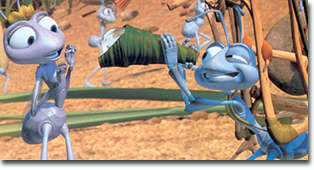 Pixar’s films have always been very stylized, which long has been the only way to work with computer graphics. As technology advanced photo-realism became more important. Is true photo-realism beyond grasp still, or is it something we will see in the near future? “Whether it could be done, I am sure, if someone wanted to do it, they could do it. We’re not really interested in that. We’re not interested in our reality, we’re into a believable world for the story we’re telling. We’re not particularly driven by photo-realism. If we were in the effects business, we’d have to be, but we don’t have to worry about matching our shots with live action. There’s a great quote of a matte artist at ILM, who once said, If you want photo-realism, use a camera.”
Pixar’s films have always been very stylized, which long has been the only way to work with computer graphics. As technology advanced photo-realism became more important. Is true photo-realism beyond grasp still, or is it something we will see in the near future? “Whether it could be done, I am sure, if someone wanted to do it, they could do it. We’re not really interested in that. We’re not interested in our reality, we’re into a believable world for the story we’re telling. We’re not particularly driven by photo-realism. If we were in the effects business, we’d have to be, but we don’t have to worry about matching our shots with live action. There’s a great quote of a matte artist at ILM, who once said, If you want photo-realism, use a camera.”
The next step after “A Bug’s Life” will be the sequel to Pixar’s award winning “Toy Story”. Although it is obvious that many of the developments and achievements made for “A Bug’s Life” will find their way into “Toy Story 2”, the question remains, will the film stay true to its original rigid, man-made look or will it be replaced with a more organic one?
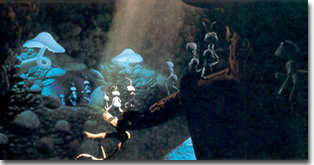 “Toy Story 2 will clearly benefit from everything we learned so far, but we will be true to the world. It’ll be like Version 2.0. We’re back to the same characters, it takes place in a city instead of out in the field. By nature the looks will be different, but you’ll definitely notice that the amount of detail and organic touches will be much better.”
“Toy Story 2 will clearly benefit from everything we learned so far, but we will be true to the world. It’ll be like Version 2.0. We’re back to the same characters, it takes place in a city instead of out in the field. By nature the looks will be different, but you’ll definitely notice that the amount of detail and organic touches will be much better.”
With that in mind, it is interesting to see how Pixar have in fact changed the face of the entire film industry. Literally every computer generated shot you see in today’s films can be attributed to their work in the field at a time when no one else believed it was at all possible. While still part of Lucasfilm, Pixar did the first computer generated character seen in movies ever, the glass knight from ‘Young Sherlock Holmes’, and it opened a whole new world to Dennis Muren, head of ILM. He confessed he didn’t know any other way to do the character and Pixar convinced him they could do it. It was a milestone in film history, as much as it was a milestone in the computer industry, and even today, over 15 years later, the dream and the spirit lives on.
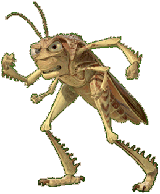







Leave a comment
You must be logged in to post a comment.